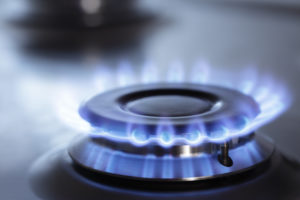 Natural gas traded slightly higher on Tuesday but failed to regain much from heavy overnight losses as forecasts for a cold weather system across the North later this week turned less bullish.
Natural gas traded slightly higher on Tuesday but failed to regain much from heavy overnight losses as forecasts for a cold weather system across the North later this week turned less bullish.
Natural gas for delivery in April rose 0.71% to $2.697 per million British thermal units by 9:41 GMT, shifting in a daily range of $2.706-$2.683. The contract tumbled 5.7% on Monday to $2.678.
According to NatGasWeather.com, natural gas demand in the US will be low-to-moderate compared to normal through March 16th, with a slightly cooler weather trend for the Midwest and Northeast over the following seven days, while the West turns somewhat warmer.
Seasonal or slightly higher temperatures continue to spread over the northern US, significantly curbing heating demand over the next several days. A weather system with periods of showers and cooler readings across the Southeast will sweep across the east-central US before reaching the Northeast this weekend, carrying rain and snow.
A strong Canadian cold front will hit the upper Great Lakes and Northeast on Thursday into Friday, although its outlook turned less impressive, causing heating demand estimates for this week to trend lower. The central and western US will remain warmer than usual through the end of the week.
Early next week, Canadian weather systems will tap colder-than-usual temperatures into the Great Lakes and Northeast, NatGasWeather.com said, while also carrying rain and snow. The West will remain mostly warm and dry, while readings over the central US hover near the average and the South experiences near or slightly cooler than usual weather.
Temperatures
According to AccuWeather.com, readings in New York will range between 34 and 47 degrees on March 12th, compared to the average 34-48, and are expected to remain near or slightly cooler than seasonal through March 20th. The high in Chicago on March 13th will be 53 degrees, 7 above usual, before peaking at 59 degrees four days later.
Down South, Houston will experience slightly cooler weather than normal through March 12th as highs peak at 68 degrees, compared to the average 71-72, before establishing in the 70s for the rest of the month. On the West Coast, the high in Los Angeles on March 12th will be 81 degrees Fahrenheit, 11 higher than usual, with the mercury set to peak in mid and high 80s for the following four days.
Supplies
This Thursday’s EIA inventory report will show another withdrawal well above the average, around -170 to -180 bcf, as last week’s Arctic outbreak is factored in, bringing deficits to around -200 bcf. The five-year average inventory decline for the week ending March 6th is 116 billion cubic feet, while stockpiles fell by 189 bcf a year ago.
However, this past weekend and the current week’s thaw will end the recent string of hefty inventory declines, causing a much thinner withdrawal for the March 19th report, especially as the upcoming cold Canadian front turned less bullish. The five-year average draw for the week ending March 13th is 45 bcf, while stockpiles slid by 69 bcf a year ago.
The Energy Information Administration reported last Thursday that US natural gas stockpiles fell by 228 billion cubic feet in the seven days through February 27th, in line with analysts’ expectations for a decline in the range of 222-235 bcf. Total gas held in US storage hubs amounted to 1.710 trillion cubic feet last week, expanding a deficit to the five-year average inventory level of 1.853 trillion to 7.7%, or -143 bcf, from 1.5% a week earlier.
Pivot points
According to Binary Tribune’s daily analysis, April natural gas futures’ central pivot point stands at $2.708. In case the contract penetrates the first resistance level at $2.748 per million British thermal units, it will encounter next resistance at $2.818. If breached, upside movement may attempt to advance to $2.858 per mBtu.
If the energy source drops below its first support level at $2.638 per mBtu, it will next see support at $2.598. If the second key support zone is breached, the power-station fuel’s downward movement may extend to $2.528 per mBtu.
In weekly terms, the central pivot point is at $2.783. The three key resistance levels are as follows: R1 – $2.926, R2 – $3.012, R3 – $3.155. The three key support levels are: S1 – $2.697, S2 – $2.554, S3 – $2.468.





